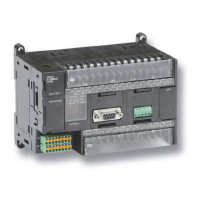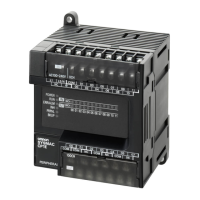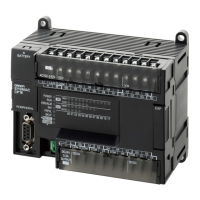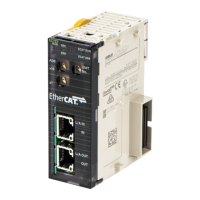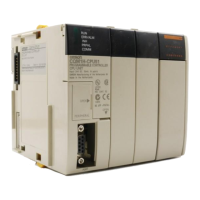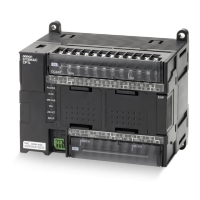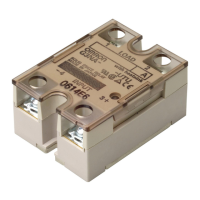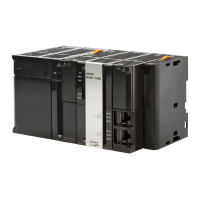281
Inverter Positioning Section 5-3
Traditional Inverter Positioning
The PLC counts the feedback pulses from the encoder using a high-speed
counter. When a deceleration point is reached, the speed is changed to con-
trol the stop position. If the precision of the stop position must be increased,
the stop position must also be detected to control positioning.
PLC
Speed change judgments
Multi-step or
speed
commands
Inverter
Power
supply
frequency
Inductive motor
Encoder
Feedback pulses
If Positioning Speed Is Increased:
Frequency
Calculated speed-
change point
Point where speed was
actually changed (High speed
results in positioning error.)
Preset
deceleration
Position
Actual
Settings
Positioning
error occurs
Positioning
error occurs!
Command
output
Setting
Actual
Changing the speed
is delayed.
Time
If Positioning Accuracy Is Increased:
Frequency
Calculated speed-
change point
Points where speed was
actually changed
Low-speed
operation
Actually stopping
point
Calculated
stopping
point
Time
Position
Actual
Settings
Positioning
error occurs
Positioning
error
continues
Error is reduced
by using a low
speed
Positioning
error is
reduced
Command
output
Setting
Actual
Time
Stopping position
is reached faster
due to high-speed
positioning error.
Stopping from a low speed is necessary to prevent positioning error.
The speed of high-speed operation produces error, requiring that
the deceleration start position be calculated and adjusted so that
a low speed is achieved near the stopping point.
The need for low-speed operation near the stopping position
increases the positioning time. PLC
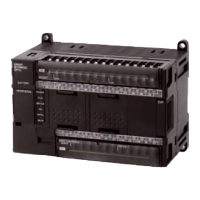
